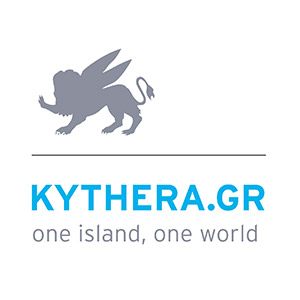The island’s most characteristic monument is the castle of Chora! The castle or “Fortezza” was built in the 13th century when Kythera was dominated by the Venetians. The “Eye of Crete” as it was also called due to its strategic position, providing the observance of ships on three seas simultaneously – the Ionian, Aegean and Cretan, was built over different phases of the island’s history, but the biggest and main part including the facade was built in 1503 by the Venetians, who repaired and reconstructed it. At the castle’s entrance you can see the tunnel or else “fossa”! The Venetian emblem of the lion of St. Mark used to be on that front wall, but it was destroyed along with the Nobility Book and the coats of arms by the French in 1797. On the left side of the castle’s entrance you can see the prison and a little further up on the right of the southwest part the huge Venetian reservoir with domes and arches.
In the middle of the castle you’ll notice a few ruined two-storey houses, as 200 years ago there were 200 inhabitants in the castle, the last one left during the Occupation when the conquerors commandeered the buildings. A further 30m walk will get you in front of the gunpowder magazine, a building with walls more than one meter thick and right next to it, the church of Pantokratoras, filled with old murals. The castle’s old headquarters are located in front of the church; the building now houses the Historical Archive of Kythera. Crossing the big tunnel underneath the headquarters you’ll reach the headquarters square with the big 16th century church – originally the Catholic “Our Lady of the Latins”. In 1806 the church was inaugurated as orthodox, commemorating Mirtidiotissa. Next to it is the church of “Panaghia Orfani” which kept the icon and heirlooms of the Agarathos monastery in Iraklion for 300 years, since Crete was dominated by the Turks. The church of Mirtidiotissa also kept the homonymous icon in times of pirate raids outbreak until 1842, when the icon returned to the monastery of Mirtidia and an 1844 copy was left in the castle instead.
Outside the fortress there is a second wall to the north, surrounding Klistos Vourgos with many churches and houses. There are several cannons in the castle, dating from the Venetian, the Russo-Turkish and the English period. Two of Mirtidiotissa’s miracles are associated with the castle and displayed at the bottom of the icon. One has to do with the ship that carried the precious metal for the icon’s dress from Crete and was threatened by pirates. The second relates to the lightning that struck the castle in 1829 and passed in front of the image and the adjacent gunpowder magazine without causing any damage.

